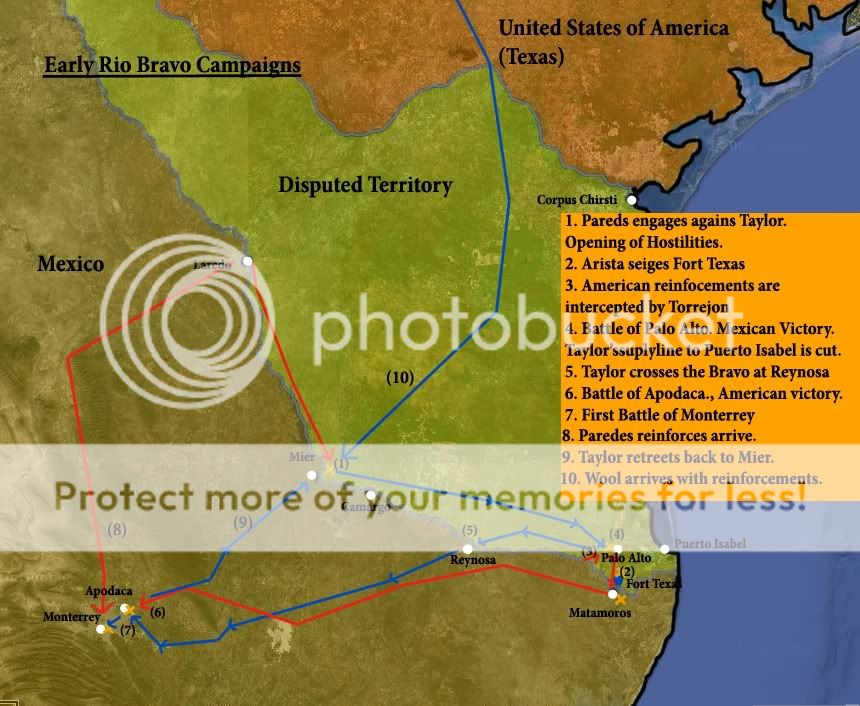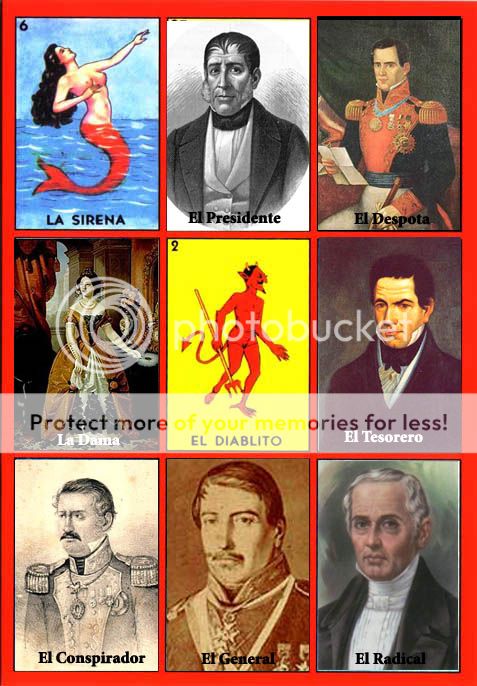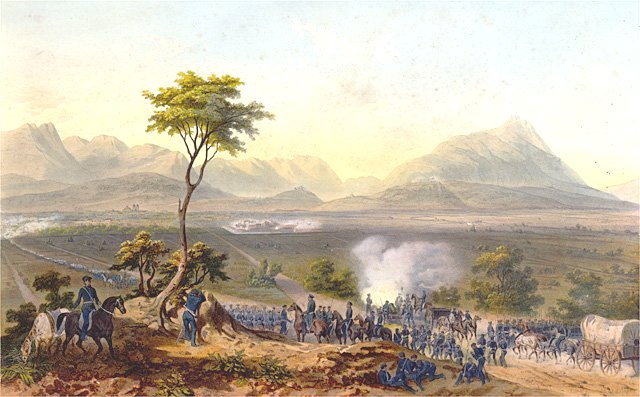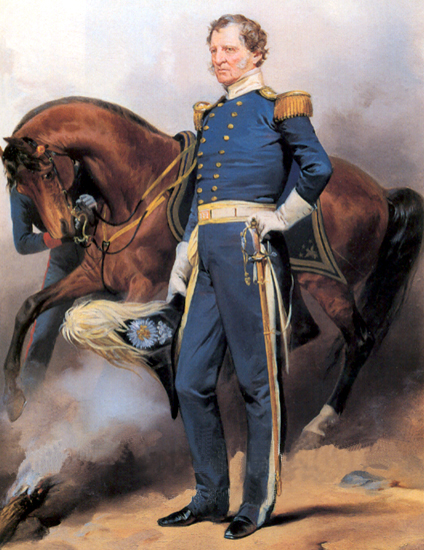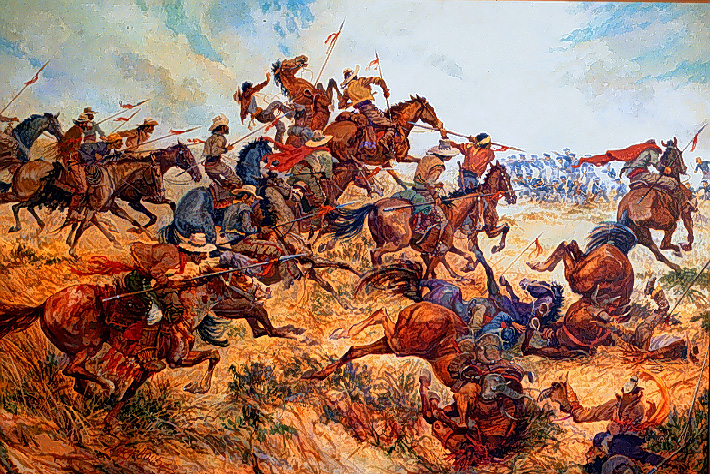Sup, everyone. Last year I started a TL where Mexico does significantly better during the Mex-American war and as a consequence the second half of the 19th century. RL caught up with me and the TL died. My notes continued and now I have the war (and a bit more) fully finished. So it was time to do a more detailed and pulpier version of it. Hope you guys enjoy:
Once upon a Time in Mexico City…
Nationalistic boasts of generals and congressmen erupted within the National Palace:
“Por la Patria!”
“Por la integridad nacional!”
In the fall of 1845 the character of Mexico City was tense; there was an overwhelming lust for war against the United States. President Herrera, a pragmatic man above all, sought to quell the iridescent nationalism plaguing the Mexican political scene. His efforts were futile. Earlier that year the American congress had approved the annexation of the so-called “Republic of Texas”, a territory most of the delegates present in Mexico City believed was rightfully Mexican.
A letter from Juan N. Alamonte, Mexico’s ambassador to the US, urged Mexico to declare war. Alamonte claimed that a war against the US could be easily won, “It is erroneous to call these states United in anyway”, Alamonte claimed. “The Union is fiercely divided over issues of slavery and expansion. Inciting a slave revolt or finding an alliance amongst the Indians would not be a difficult task”. These claims were received with great zeal in the halls of the Mexican Congress. President Herrera, however, was not as enthusiastic. Or rather he had a more realistic view of the situation.
In the months following the letter’s arrival, the President had continuously sought the advice of Richard Pakenham, the British liaison in Mexico City. Pakenham was ambitious as the Americans in regards to Mexico; he had the clear goal of securing British interests in California and preventing the US from reaching the Pacific Ocean. Like he did with Herrera’s predecessor, Antonio Lopez de Santa Anna, Pakenham warned Herrera of engaging against the United States.
Most members of Congress saw Herrera’s acquaintance with Pakenham as treason, or at the very least a sign of cowardice. But as long as the President did not receive the American ambassador, John Sidel, no one was going to call it out loud. To appease the warmongers Herrera sent a small army under the command Mariano Paredes to reinforce the border. Paredes was a fervent nationalist and a Santaanista. Giving him control of a large number of troops unnerved the President. In the past decade alone the Mexican presidency had changed hands over fourteen times; Paredes could very well be the fifteenth. But as long as the general remained in the North patrolling the borders the nationalists would remain calm and Herrera could attend to the ambassadors in Mexico City. Maybe, he thought, there could be a peaceful way out of this. But only a fool could dream so.
Meanwhile in the Borderlands…
It was all wishful thinking. Paredes was leading a 2,500 strong cavalry detachment north of the Rio Bravo to Laredo, Tamaulipas, meant to reinforce the forces under Mariano Arista stationed further east in Matamoros. Overnight the Mexican forces along the border had practically doubled. [1] With the American forces under general Zachary Taylor stationed just a few miles north, in Fort Texas, the situation tensed. Early in March of 1846, Paredes lead his forces eastwards towards Matamoros and Fort Texas; refusing to back down from the strategic location, American forces engaged against Paredes’ north of Mier, Tamaulipas. Hostilities had officially begun. In less than month news of the skirmish arrived to Mexico City and Washington. Upon hearing the news President Polk addressed congress:
“Mexico has invaded our territory and shed American blood in American soil”.
On April 5th 1846, two days after Polk’s address, Congress declared war against Mexico. It was only the northern abolitionists and moderate Whigs who opposed the war and labeled it “a Southern war for the expansion of slavery”. [2]
In truth Laredo as well as Fort Texas, were located north of the Bravo in a territory previously claimed by the Republic of Texas and now the US. Historically, however, the government of Tamaulipas had always administered this territory. Mexico did not declare war until May 13th, after a final meeting between President Herrera and ambassador Pakenham regarding Britain’s position on the issue.
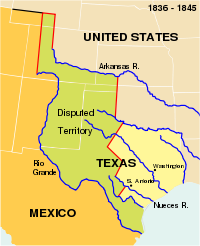
[1] POD: In OTL Paredes led the army back to Mexico City and staged a coup against Herrera.
[2] The declaration of war happens a month earlier than OTL, without Paredes ever issuing his manifesto. Thus the United States will be appear to be much more of an aggressor in the eyes of Europe, particularly Britain.
A Mexican “Victory” 2.0
Part One: So Far From God, So Close to the United States

Part One: So Far From God, So Close to the United States

Once upon a Time in Mexico City…
Nationalistic boasts of generals and congressmen erupted within the National Palace:
“Por la Patria!”
“Por la integridad nacional!”
In the fall of 1845 the character of Mexico City was tense; there was an overwhelming lust for war against the United States. President Herrera, a pragmatic man above all, sought to quell the iridescent nationalism plaguing the Mexican political scene. His efforts were futile. Earlier that year the American congress had approved the annexation of the so-called “Republic of Texas”, a territory most of the delegates present in Mexico City believed was rightfully Mexican.
A letter from Juan N. Alamonte, Mexico’s ambassador to the US, urged Mexico to declare war. Alamonte claimed that a war against the US could be easily won, “It is erroneous to call these states United in anyway”, Alamonte claimed. “The Union is fiercely divided over issues of slavery and expansion. Inciting a slave revolt or finding an alliance amongst the Indians would not be a difficult task”. These claims were received with great zeal in the halls of the Mexican Congress. President Herrera, however, was not as enthusiastic. Or rather he had a more realistic view of the situation.
In the months following the letter’s arrival, the President had continuously sought the advice of Richard Pakenham, the British liaison in Mexico City. Pakenham was ambitious as the Americans in regards to Mexico; he had the clear goal of securing British interests in California and preventing the US from reaching the Pacific Ocean. Like he did with Herrera’s predecessor, Antonio Lopez de Santa Anna, Pakenham warned Herrera of engaging against the United States.
Most members of Congress saw Herrera’s acquaintance with Pakenham as treason, or at the very least a sign of cowardice. But as long as the President did not receive the American ambassador, John Sidel, no one was going to call it out loud. To appease the warmongers Herrera sent a small army under the command Mariano Paredes to reinforce the border. Paredes was a fervent nationalist and a Santaanista. Giving him control of a large number of troops unnerved the President. In the past decade alone the Mexican presidency had changed hands over fourteen times; Paredes could very well be the fifteenth. But as long as the general remained in the North patrolling the borders the nationalists would remain calm and Herrera could attend to the ambassadors in Mexico City. Maybe, he thought, there could be a peaceful way out of this. But only a fool could dream so.
Meanwhile in the Borderlands…
It was all wishful thinking. Paredes was leading a 2,500 strong cavalry detachment north of the Rio Bravo to Laredo, Tamaulipas, meant to reinforce the forces under Mariano Arista stationed further east in Matamoros. Overnight the Mexican forces along the border had practically doubled. [1] With the American forces under general Zachary Taylor stationed just a few miles north, in Fort Texas, the situation tensed. Early in March of 1846, Paredes lead his forces eastwards towards Matamoros and Fort Texas; refusing to back down from the strategic location, American forces engaged against Paredes’ north of Mier, Tamaulipas. Hostilities had officially begun. In less than month news of the skirmish arrived to Mexico City and Washington. Upon hearing the news President Polk addressed congress:
“Mexico has invaded our territory and shed American blood in American soil”.
On April 5th 1846, two days after Polk’s address, Congress declared war against Mexico. It was only the northern abolitionists and moderate Whigs who opposed the war and labeled it “a Southern war for the expansion of slavery”. [2]
In truth Laredo as well as Fort Texas, were located north of the Bravo in a territory previously claimed by the Republic of Texas and now the US. Historically, however, the government of Tamaulipas had always administered this territory. Mexico did not declare war until May 13th, after a final meeting between President Herrera and ambassador Pakenham regarding Britain’s position on the issue.

[1] POD: In OTL Paredes led the army back to Mexico City and staged a coup against Herrera.
[2] The declaration of war happens a month earlier than OTL, without Paredes ever issuing his manifesto. Thus the United States will be appear to be much more of an aggressor in the eyes of Europe, particularly Britain.
Last edited by a moderator:
